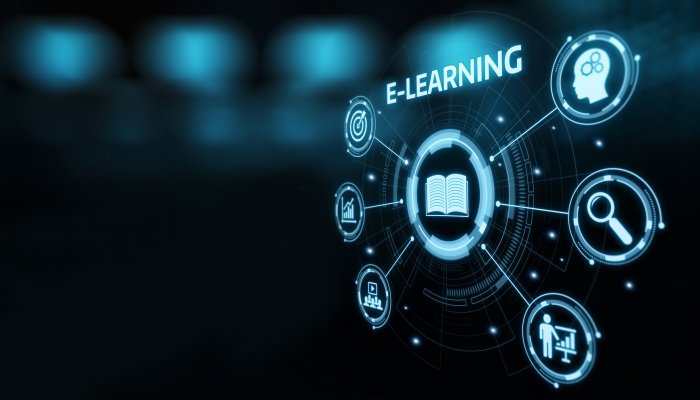“I didn’t think that I would enjoy online learning at all because I’ve always been someone who prefers face-to-face learning opportunities and engagements with my classmates. However, when reflecting and looking past the initial frustrations that ensued when we had to pivot to this mode of learning, I have learnt to listen attentively and have realised that mine is truly not the only important voice in the room. I have learnt so much more from silence and listening in 2020, which has brought me closer to new and old friends. Certainly not how I would have envisioned my MBA journey, but I wouldn’t change it for the world. The trials and tribulations of 2020 have left me more humble, kinder, and definitely more resilient.”
– Nomonde White, member of the 2020 MBA Entrepreneurship Focus class
The Covid-19 pandemic created a challenge for the GIBS learning experience. What was to be an engaging course conducted in real life had suddenly been cast into doubt as the reality of lockdown, and online learning emerged. But could this time of Covid-19 be a chance to test an entirely new modality of learning? Was there a way of giving students a learning experience during the pandemic that would be more than a workaround, and something that would even positively differentiate their MBA in years to come?
These questions drove my rapid redesign of the MBA Entrepreneurship Focus to move learning online and build a positive and meaningful experience for students.
There’s no doubt that Covid-19 has significantly disrupted higher education, but its impact is not yet completely clear. At a recent Harvard Business Publishing Webinar, Professor Vijay Govindarajan said: “Covid-19 has given a death blow to American higher education, because the very thing that American higher education prides itself [on], which is social connection, is what Covid-19 attacks”.1 Indeed, while we still need theory and tools to better understand what the pandemic may mean for long-held approaches to education, there is surely room for a more positive approach. This article offers insights into how I designed learning activities that make effective use of technology while ensuring optimal engagement between students and faculty.
A medieval model
Our learning model – essentially a batched production system – is a derivative of models of learning that originated in medieval Europe. The idea of gathering people – mostly the young – into cloistered learning environments where knowledge is created and imparted to the worthy, can be seen today in thousands of universities worldwide. While still functional and at the heart of universities’ financial models, this teaching and learning modality has never been under serious threat.
One might argue that the emergence of pure online plays, such as Udemy, Coursera and EdX, do not change the status quo, and simply act as another channel to market for established institutions to recycle content and faculty. In so many ways, online learning has been seen as a poor substitute for real-life contact learning, although a viable option for those far from campus or unable to afford the live classroom experience.
Elegant simplicity
I found myself thrust into this milieu with the lockdown in South Africa and the move to online teaching and learning. The GIBS MBA Entrepreneurship Focus, still in its embryonic phase, had been designed as a face-to-face experience with reliance on building a closely-knit cohort of students through a shared classroom experience. This is undoubtedly a consistent ideology for most business schools: gather a group of motivated students in the room with a professor skilled at the case method and in facilitating classroom discussion and engagement, and let the magic happen! It is this that makes teaching and learning in the business school part art and part science.
However, the fluid circumstances of the Covid-19 lockdown and the need to switch between different forms of online learning (synchronous, asynchronous and hybridised) forced me to develop a new approach that has, in hindsight, proven useful in designing learning activities. Almost all teaching and learning is a trade-off – large classes mean less personal attention, individualised assessment is usually very time consuming to grade and moderate, and I saw my work during the Covid-19 course redesign as trying to balance the trade-off between engagement and the effective use of technology.
The model shows how activities across two axes – engagement and technology – shifted from initial pre-Covid conceptualisation and formulation to a post-Covid context. As always, there were trade-offs, but some surprising opportunities were leveraged, and gains experienced. On the matrix shown, I have mapped four key activities: teaching and learning, guest speakers, syndicate learning and assessment, and the GIBS global module across these axes. I noted that while in-class engagement suffered through lack of face-to-face engagement, what was gained was the students' ability to learn at their own pace.
I make extensive use of guest speakers in my classes, almost always restricted to those in the Gauteng area. With Covid, I had the chance to throw the net much wider and bring in speakers from around the globe. This was amplified during the virtual global module that I ran in place of our traditional module based on an in-person visit to a country. The virtual module allowed the class to engage 10 entrepreneurs in 10 different countries over two weeks. While we lost the in-country experience, we gained a much broader set of contexts and experiences.
Resistance remains
Despite the growth in online learning that is sure to come due to the current pandemic, not all online learning is equal, and there will be continued resistance to a move from traditional classroom-based teaching and learning to a purely online model. Research completed in November 2019 by Gallup and Inside Higher Ed found that while there was a marginal increase in the number of faculty teaching online, there was a general resistance to online learning, with a sizable minority disagreeing with the statement “online courses can achieve student learning outcomes at least equivalent to in-person courses at any institution”. Aharon Chemel, a GIBS MBA student, commented that “a classroom is not just a platform to get through a syllabus but rather a space for people to express themselves through emotion, intellect and experience. When learning online, this aspect of the experience was missing.”
Despite resistance from faculty and students, online learning has been shown to be effective in an emergency situation, but more importantly, as a useful and valuable adjunct to the classroom-based experience. But it can – and should – be more. The careful application of technology can yield a richer learning experience, and the work of all those who design, deliver and administer learning is to keep in mind the objective of meeting student outcomes and remain focused on learning from our own practice in the changing context in which we live.

BIO:
Dr. Jonathan Marks
Dr. Jonathan Marks holds a Master’s in Business Administration (MBA) degree from the University of Cape Town’s Graduate School of Business and a Doctorate in Philosophy, focused on entrepreneurship, from the University of Cape Town’s faculty of engineering and the built environment. Dr. Marks was founding director of the Raymond Ackerman Academy of Entrepreneurial Development (located at UCT) and was responsible for entrepreneurial knowledge management at the Allan Gray Orbis Foundation.






